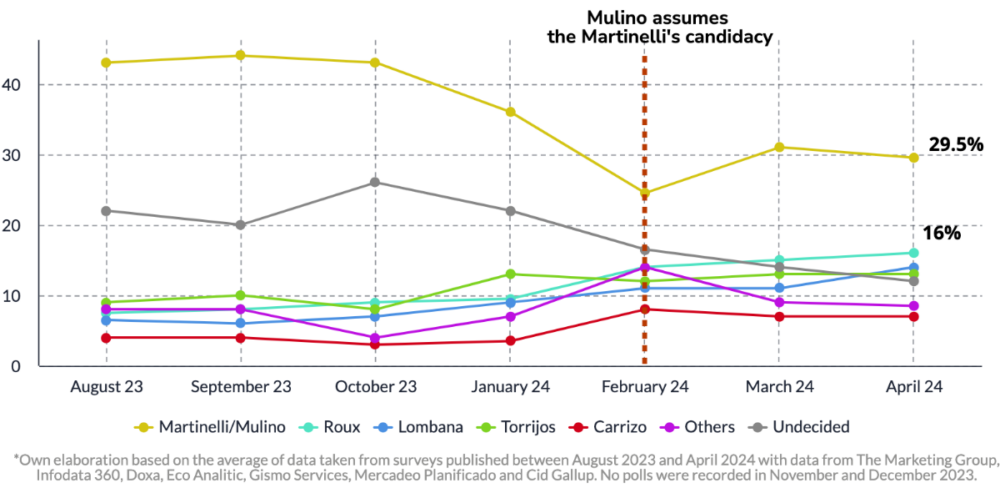Mulino leads the presidential race despite pending controversy over his candidacy in the Judicial Branch

On May 5, Panamanians will elect the next president and the new National Assembly for the period 2024-2029. Among 8 candidates, José Raúl Mulino of Realizando Metas (RM) leads the electoral race. Whoever obtains the highest number of valid votes will win the Presidency, since there is no run-off election.
The elections will be held in a context of controversy due to the disqualification of the original candidate of RM, former president Ricardo Martinelli who was the favorite in the polls until his prohibition to participate in the election. In addition, Mulino’s candidacy is being questioned by the Supreme Court of Justice, due to the fact that he was not elected in an internal party election and that he is running without a vicepresidential candidate. This will add up to a great social discontent and low levels of approval for the outgoing president Laurentino Cortizo and the Assembly.
Also at stake are the 71 seats in the National Assembly, currently controlled by the ruling PRD and its allies, although also characterized by a high degree of internal fragmentation. After the election, a similar scenario is not ruled for the conformation of the new Assembly. If this is verified the construction of consensus will be paramount for the new President to push his agenda.
Mulino has an advantage but far from being decisive
According to the polls, Mulino leads, but it is not a definite advantage. Although he remained in first place throughout all the electoral campaign, he never managed to consolidate a position as solid as the one Martinelli had. However no other candidate has managed so far to reach him in the voting intention. Another thing did not change during the campaign: the ruling party, represented by the current vice president José Gabriel Carrizo, always had a low voting intention.

Legislative Elections
71 seats of the National Assembly are up for grabs through 39 electoral constituencies. Currently, the PRD and its ally Molirena have the majority in the Legislative branch. However, this Assembly was characterized by internal divisions in different political parties, especially in the ruling party, so the agenda of Cortizo’s administration was often delayed.
Reflecting this situation, the majority of the electorate does not trust the current Legislative Branch, according to opinion polls. For this reason, all candidates proposed constitutional reforms, being the Assembly one of the most targeted organs of the State.
If the voting intentions for the presidential race were to be replicated for the Legislative elections, it is highly likely that the next ruling party might need allies to pass its legislative agenda. This will be particularly problematic for Martinelli’s giving his confrontation with other relevant political parties.

